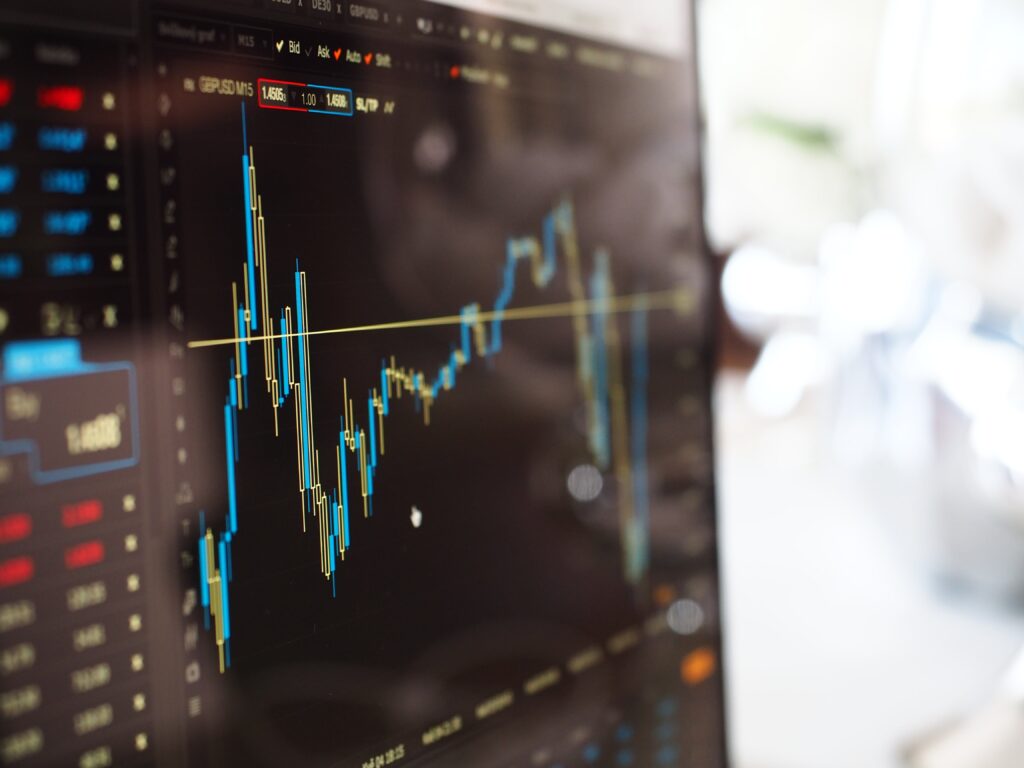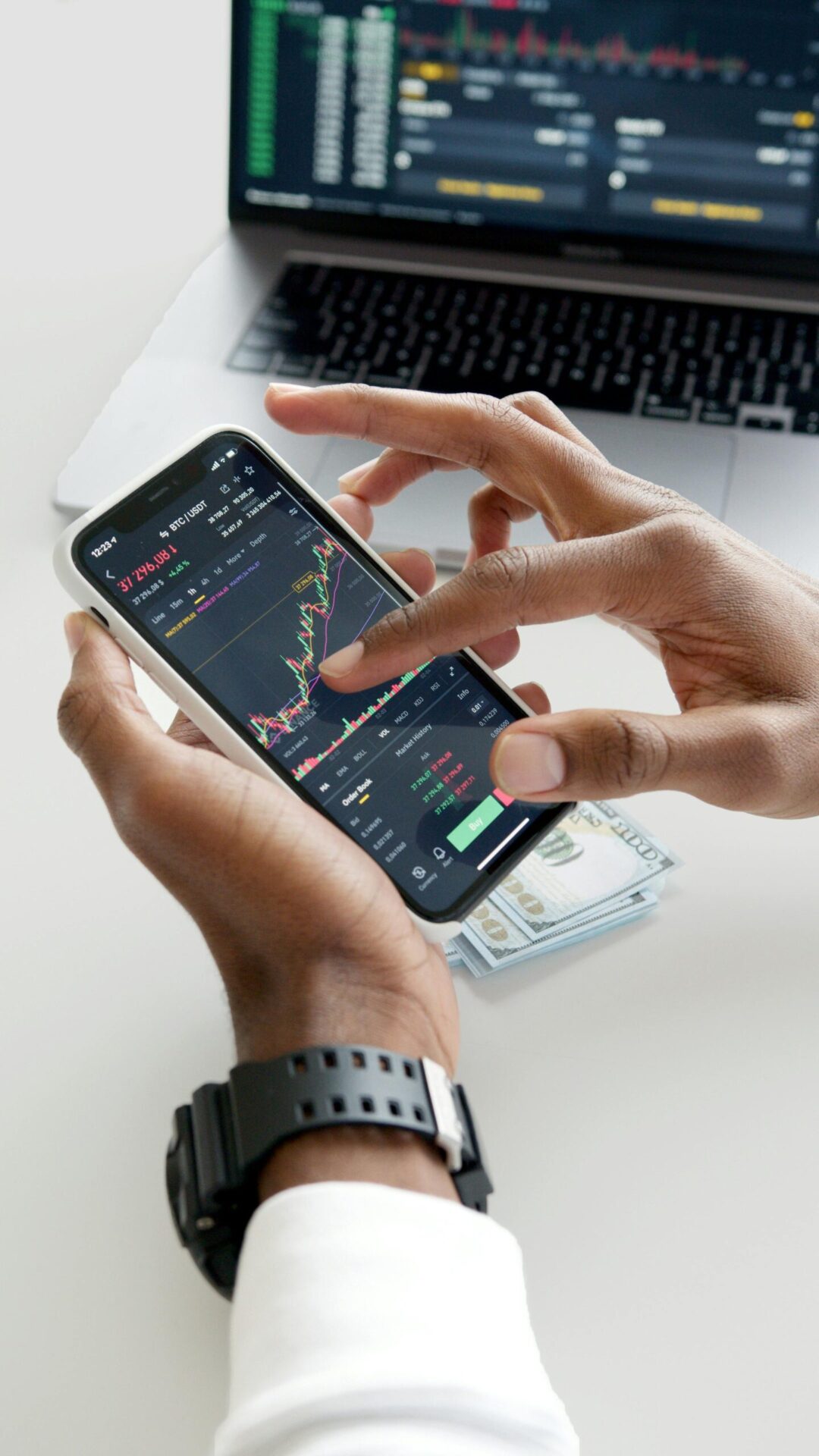Stock trading is proving incredibly lucrative, especially for those in the tech sector.
Artificial intelligence has boosted some companies, such as NVIDIA and Astera Labs to record highs.
In this article, we take a look at the stock trading market for March 20.
Stock Trading: Market Snapshot
The US dollar rose for the fifth day in a row on March 20.
Roughly speaking, it looked like stocks, bonds, and other financial market traders were waiting to see what would happen at a make-or-break meeting of the US Federal Reserve later in March 20.
The Yen sagged after the Bank of Japan dialed back its experiment with negative interest rates, while markets now turn their focus on what hints the US central bank may give for changing US interest rates.
Will the Federal Reserve signal that two rate cuts could still come this year instead of the three cuts bet on by market participants?
Stock Trading: US Interest Rates
Worried that progress against inflation might be grinding to a halt, investors are circulating suggestions that US interest rates need to stay within their current range (5% – 5.25%) for longer than is anticipated by the bond markets, the consumer, the politicians, and even the US central bankers themselves.
The greenback firmed just under 0.5% on the day, as traders put more faith in the persistence of current interest rates. The yen and the pound dropped, the latter after softer UK inflation figures.

Stock Trading: Euro Markets
As for shares on European markets, they reacted to a considerable profit warning from Kering, which owns some top luxury brands, and to the bond market—that is, markets are waiting to see, without great conviction, what the Fed will do.
Yields on US 10-year Treasuries are getting close to the peak July 2024 rates, and on European bonds, they are falling due to a recent CPI from the UK.
Stock Trading: Fed Rate Cuts
Markets remain undecided whether the Fed will cut rates: a set-up of monetary options that is ambivalent both for the Fed and the markets.
It confirms the geopolitical origin of the recent ‘high stakes’ environment in finance.
Very little, if anything, depends on the calculation of financial valuations anymore; everything depends on the interaction of various monetary options and one’s interpretation of developments.
Stock Trading: US Interest Rates
That is why it would be beneficial for financial economists to go back to more basic and essential foundations in monetary theory.
Powered by these considerations, most economists still see a so-called ‘soft landing’ containing inflation to below targets, and setting the stage for a gradual easing of interest rates.
Stock Market Surge: Winning Strategies with US CPI, Intel and more!
Stock Trading: Economists At odds
But nearly a quarter of economists – up from 19% just last month – say they see ‘no landing’ in the next year, nearly fourfold from the end of last year, according to a poll of economists by the US bank Bank of America.
This implies continued growth, if slower, or possibly accelerating growth, combined with inflation above targets, and interest rates remaining high or moving only a little lower – in essence, a ‘higher for longer’ economy today.
Stock Trading: Risks of High-Interest Rates
While very high rates carry risks such as increased stress from debt service payments, plus higher default and unemployment rates, the market does not yet seem worried.
Stock trading markets continue to rise, though when borrowing costs increase, it causes widespread fears of disaster.
This is reflected in the Bank of America survey; expectations for bond yields to decline did drop, and more investors reported being ‘bullish’ on both corporate earnings and confirming a continued flow to stock trading.
Europe and emerging markets are seeing a shift from cash to stock trading.
Stock Trading: Good Market Outlook
This outlook is driving adjustments from asset managers that will persist for the foreseeable future.
In an interview this month with the Financial Times, HSBC’s Global Chief Investment Officer Willem Sels said his stance on asset allocations at the tactical level remains strictly zero cash and that he continues to favour global equities and bonds.
Geopolitical tensions, disrupted trade, unavoidable elections, and rising inflation of course pose risks, but so far, these have not led to a meaningful derailment of the economy or of investors’ confidence.
With concerns such as the cooling in China’s property markets and political tensions in certain parts of the world, industrial output worldwide is expanding, and stock trading markets are beginning to recover.
Not long after Japan ended its policy of negative interest rates, the world’s markets did not, as many had feared, spin out of control.
Together with this, we are also seeing upwardly revised forecasts for global growth, as the IMF now sees a pickup in world growth, indicating a possibly more secure and stable growth outlook in the years ahead.
The prospect of global growth returning over the coming years opens up the opportunity for central banks to remain more even-handed in their approach to interest rates, with inflation kept in check while the current economic expansion continues.
Stock Trading: Euro Markets See Selloff
European stock markets fell on Wednesday after a sharp selloff in luxury brands in the wake of a sales warning from French group Kering, with broader market caution ahead of an imminent Federal Reserve monetary policy decision.
The pan-European STOXX 600 index was down 0.2%.
The personal and household goods sector, which includes many luxury brands, was hit hardest, down 1.9%.
Shares in Kering, the group behind brands such as Gucci, tumbled 14.8% when the French-based company, posted its second profit warning of the year.
The company revealed that sales in the first quarter were down almost 10%, with Gucci being particularly affected in Asia.
Its shares would be on course for their biggest one-day decline ever if current trends persist.
The announcement puts further pressure on the luxury sector, which was joined late last month by a profit warning from Burberry, which pointed to a deepening slowdown in demand.
The fallout extended to some higher-status brands: shares in the luxury groups LVMH, Burberry, Richemont, and Christian Dior all dropped between 3% and 5%.
Gene Salerno of SG Kleinwort Hambros remarked on the headwinds still facing China, but noted glimmers of hope for Chinese consumer sentiment as ‘improvements in manufacturing and export activity’ are reflected in economic statistics.
A couple of economic indicators also suggest slowing European growth, with German producer prices falling further than expected and German Unity Day discounting driving UK inflation cooler than forecast.
Meanwhile, today, UK consumer spending data and new orders provide another potential guide to growth momentum. Market attention also looks toward Italian industrial output for February.
But it’s still all about the Fed, and assuming no surprises, market watchers expect the central bank to leave its policy rate unchanged.
Investors, meanwhile, will be focused on the Fed’s so-called dot plot, as it gives a preview of where future rate hikes will come. It was just the beginning of many more industry acquisitions and mergers.

There were several more movements caused by merger and acquisition (M&A) deals in the sector.
Lonza’s shares were up 4.4% as it acquired Roche’s Genentech manufacturing site in Norwalk, California.
Johnson Matthey’s shares soared 7.2%, leading the broader STOXX 600 as it agreed to sell its medical device components division to Montagu Private Equity. Bureau Veritas rose 4.3% after it announced the acquisition of three companies in South and Northeast Asia.
Asteria Labs on March 19 said it priced its initial public offering (IPO) at $36 per share, selling 19.8 million shares to raise $712.8 million, above its previously projected range of $32 to $34 per share.
The San Jose, California-based company, which outlined the total number of shares offered in its form S-1, which is on file with the US Securities and Exchange Commission, will trade on the Nasdaq Global Select Market as ALAB starting 20 March. Its value is around $5.5 billion.
But this IPO will also be significant because ‘Deep Learning’ AI, and the ability of computers to process increasing amounts of data, is starting to make real and significant impacts across a range of industries.
This is helping to increase share prices at companies such as Nvidia, which is one of the biggest suppliers of the computer chips needed to fuel the revolution.
Astera Labs expects to bring in gross proceeds of just under $604.4 million on the back of its IPO.
Headquartered in California, it produces key components for data centres used by cloud service providers.
Astera had a $3 billion valuation following the last round of self-funding in 2022. Morgan Stanley and JP Morgan are hosting the offering as joint lead underwriters.
For the first time, Chipotle Mexican Grill’s stock broke the $3,000 barrier on Wednesday, jumping up 8% after the company’s board announced a 50-for-one stock split to lower the price per share and entice further investors.
Thanks to reliable revenue from growing demand among its affluent customers, shares have climbed over the preceding year.
A stock split reduces the per-share price but not the total value of 100% of the company’s shares on the market, which makes individual investors more likely to afford them.
If the stock had closed at $2,797.56 on March 19, at the proposed 25:1 ratio, it would open at about $56 when trading resumed.
That’s because the company has 27.4 million shares now outstanding.
If the split wins shareholder approval at the annual meeting on June 6, every shareholder will end up with 49 extra shares.
At its latest close, Chipotle is fourth in per-share value on the S&P 500 (as large-cap stocks are measured by the Standard & Poor’s 500 stock market index).
It has a market capitalization of $76.71 billion.
Chipotle’s split, the first in its 30-year history, is designed to make the stock more accessible for employees and other investors, the company’s CFO Jack Hartung said.
By distributing free stock to employees, Walmart increased economic ownership among its workers.
Jim Sanderson, an analyst at the investment research firm Northcoast Research, points out that, while the split should improve the company’s liquidity (the IFly site currently lists only six trades), it won’t detract from the firm’s ‘windows of economic prosperity’.
At $635.84, Chipotle’s share price is a far cry from the $22 per share at which it went public in January 2006.
Chipotle’s forward price/earnings ratio is pretty high: 49.72 compared with 20.89 for Starbucks and 22.24 for McDonald’s.






